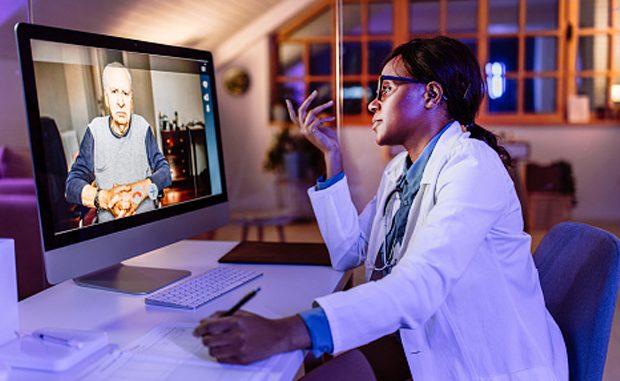

Virtual Multidisciplinary Rounds Cut Length of Stay, Costs

The value of traditional in-person multidisciplinary rounds (MDRs) — particularly with patients facing complex conditions like heart failure, pneumonia or cancer — have long been shown to reduce length of stay (LOS) and improve throughput. So, what about virtual multidisciplinary teams?
A new study published this month in The Joint Commission Journal on Quality and Patient Safety finds that virtual MDRs combined with other interventions led to more than 60% of discharges being below the mean LOS at Yuma Regional Medical Center in Arizona and delivered other benefits.
The Value of Virtual MDRs
The research is significant because there are limited studies about the effectiveness of virtual MDRs and their impact on LOS, the report explains.
Study leaders designed and implemented virtual MDRs through conference calls with stakeholders in the facility, including case managers, hospitalists, nurse leaders and the clinical documentation team. Dashboards were created to track progress in real time using data gathered from electronic health records.
In addition to reduced LOS, the study found that mean observation hours dropped from about 44 hours to 31.9 hours and that the hospital was able to maintain this change for more than a year. In fiscal year 2021, 3,813 excess days were reduced in 10 months, resulting in a combined savings of $6.7 million.
Researchers concluded that virtual MDRs also curbed hospitalist variation and improved stakeholder engagement with the hospital.
Other Virtual Care Models Expand
Virtual MDR models increased in usage during the pandemic, but providers also continued to implement other virtual care solutions to connect clinicians in a bid to enhance care coordination, improve chronic disease management and access to specialty care.
Earlier this year, UVA Health and several Southwest Virginia health care groups partnered to expand access to telehealth and combat chronic health problems by creating the Virginia Consortium to Advance Healthcare in Appalachia. The coalition was backed by a $5.1 million federal grant.
The initiative brings together the UVA Center for Telehealth, the Healthy Appalachia Institute at the University of Virginia’s College at Wise, the Southwest Virginia Health Authority, the Health Wagon, Tri-Area Health and Ballad Health to provide care using innovative telehealth models.
The goal is to improve outcomes for patients with COVID-19 and chronic health conditions that have been worsened by the pandemic, along with establishing a long-term blueprint for providing care in rural communities. The coalition will serve the city of Norton and 10 counties that have severe physician shortages for primary and specialty care and significantly worse health outcomes than other parts of Virginia.
4 Ways UVA Is Expanding Access with Virtual Care
1 | Interactive Home Monitoring
Through this program, patients can monitor cardiovascular disease risk factors such as weight and blood pressure from the comforts of home. Patients are provided with internet-connected tablets and medical equipment such as blood pressure cuffs, thermometers and scales.
2 | Provider Education and Virtual Consults
UVA Health’s Project ECHO will provide training to health care providers in the region on COVID-19 and post-COVID care, interactive home monitoring and caring for patients in isolation. Regional providers also will be able to access UVA Health’s eConsults program, which enables providers to consult with UVA specialists via the electronic health record.
3 | Virtual Mental Health Care and Chronic Disease Management
Two state-funded programs are being expanded in the region to provide virtual mental health services and support chronic disease management and prevention.
4 | Post-COVID-19 Care
UVA Health will expand its post-COVID care clinic to Southwest Virginia using telehealth technology to help patients recover from long-term symptoms. To date, about 70% of patients treated through the clinic have made a full recovery.



